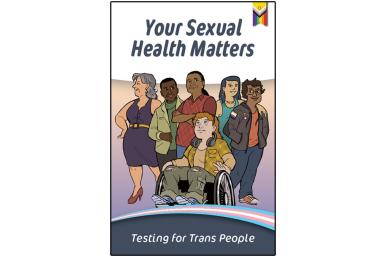- This document provides an overview of what an overdose prevention site is, the supplies and materials needed to run one, and a basic 1-point outline on everything needed to safely operate an overdose…
- Placeholder
- This fact sheet provides a snapshot of the HIV epidemic in Canada. All epidemiological information is approximate, based on the best available data. Most of the data contained in this fact sheet come…
- There has been a treatment revolution in hepatitis C: safe and highly effective direct-acting antiviral (DAA) treatment can now cure hepatitis C in as little as eight to 12 weeks. The availability of…
- There are highly effective treatments that cure more than 95% of people of hepatitis C. Being cured of hepatitis C prevents any further liver injury by the hepatitis C virus and prevents progression…
- Placeholder
- Programming ConnectionThe FOXY and SMASH programs provide peer leader retreats in the Northwest Territories to support HIV and sexually transmitted infection prevention among Northern and Indigenous youth.
- The CATIE statements summarize the best available evidence on the effectiveness of new approaches. These statements were developed to help service providers in Canada adapt their programs and…
- CATIE NewsA B.C. study measured life expectancy trends among more than 14,000 people living with HIV. People living with HIV had shorter life expectancies if they had been assigned female at birth. The gap…
 Your Sexual Health Matters: Testing for Trans People is an illustrated booklet designed to help trans and nonbinary people navigate the STBBI testing process with confidence and clarity.
Your Sexual Health Matters: Testing for Trans People is an illustrated booklet designed to help trans and nonbinary people navigate the STBBI testing process with confidence and clarity.
-
Essentials
-
-
-
-
Statistics
-
Government and community strategies
-
Menu Callout TitleEssentials
Menu Callout BodyBackground information on HIV, hepatitis C and STIs in Canada, including basic information, statistics (epidemiology), provincial and national strategies to address HIV, hepatitis C and STIs, and social determinants of health.
-
-
Prevention
-
How transmission occurs
-
Prevention methods
-
-
Safer sex
-
Harm reduction
-
-
Menu Callout TitlePrevention
Menu Callout BodyInformation on HIV and hepatitis C transmission and prevention, including STIs and safer sex, harm reduction, pregnancy and infant feeding, and microbicides and vaccines.
-
-
Testing & DiagnosisMenu Callout Title
Testing and diagnosis
Menu Callout BodyInformation on diagnostic tests for HIV, hepatitis C and STIs; the delivery of testing and counselling; and resources for people who are newly diagnosed.
-
Treatment & Care
-
HIV treatment, care and support
-
Hepatitis C treatment, care and support
-
Menu Callout TitleTreatment and care
Menu Callout BodyInformation on treatment, care and support for HIV, hepatitis C and STIs, including medications, healthy living, pregnancy and infant feeding, hepatitis C re-infection, and long-term health issues.
-
-
Education, Publications & Websites
-
Education
-
Order a publication
-
Service provider publications
-
Client publications
-
Websites
Menu Callout TitleEducation, publication and websites
Menu Callout BodyCATIE’s online educational courses, webinars, online and print publications, and other websites.
-
-
About CATIE
-
What we do
-
Governance
-
Supporting our work
-
Menu Callout TitleAbout CATIE
Menu Callout BodyCATIE strengthens Canada’s response to HIV and hepatitis C by bridging research and practice. We connect healthcare and community-based service providers with the latest science, and promote good practices for prevention and treatment programs.
-
